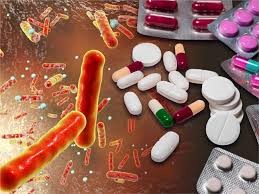Natural compounds play an important role in the development of new drugs. Many compounds discovered and isolated from natural medicinal sources such as medicinal plants, animals, bacteria, fungi have been used to treat various diseases.
With the development of analytical technology, scientists have been able to separate, identify and synthesize natural compounds. These compounds are not only used as a source of medicinal materials for drug production, but also used to prepare new synthetic compounds. The combination of natural and synthetic compounds has led to the creation of new drugs with better therapeutic potential and fewer side effects. Much research is also focusing on the use of natural compounds to enhance the effectiveness of existing drugs and reduce unwanted side effects.

Therefore, finding and developing new natural compounds is still very important for the development of pharmaceutical chemistry and improving people’s quality of life. However, many natural compounds with complex structures cannot be obtained by synthesis, but can only be extracted from medicinal herbs such as quinine, morphine, ajmalicin, vincaleucoblastin, digitalin, digoxin… is a source of raw materials for the semi-synthetic sale of some drugs. For the need for semi-synthetic steroids alone, the world needs about 100,000 tons of diosgenin-containing rhizomes annually. Medicinal materials also provide basic frameworks for the synthesis of termite drugs, paving the way for the development of pharmaceutical chemistry. For example, ephedrin is an active ingredient in the Ephedra plant that is used to treat diseases such as low blood pressure, respiratory disease, and asthma. In imitation of nature, pharmaceutical chemistry goes by a synthetic route by condensing L-1-phenyl-1-acetyl carbinol with methylamine to give ephedrine and then structural analogues. Based on the structure of quinine in canna soup, many other antimalarial derivatives have been synthesized. Based on artemisinin isolated from yellow flower, arteether, artemether, artesunate derivatives are sold synthetically also for the treatment of malaria. Currently, people still tend to study active ingredients with new structures from medicinal herbs and then semi-synthesize more effective derivatives. From 1950 to 1980, after testing the anti-cancer effects of 40,000 species of herbs, a number of active substances with anti-cancer effects were isolated, including paclitaxel (taxol®) isolated from Taxus brevifolia Nutt plant, family Taxaceae has the effect of curing cancer, especially ovarian cancer in advanced stage. In 1992 in the US, Canada and France, taxol was used clinically. Currently, researchers have semi-synthesized taxols and derivatives (such as docetaxen with the brand name taxotere®) from 10-desacetyl baccatin III, a taxane compound found in red pine.
